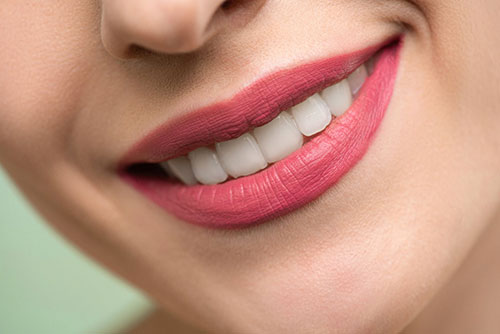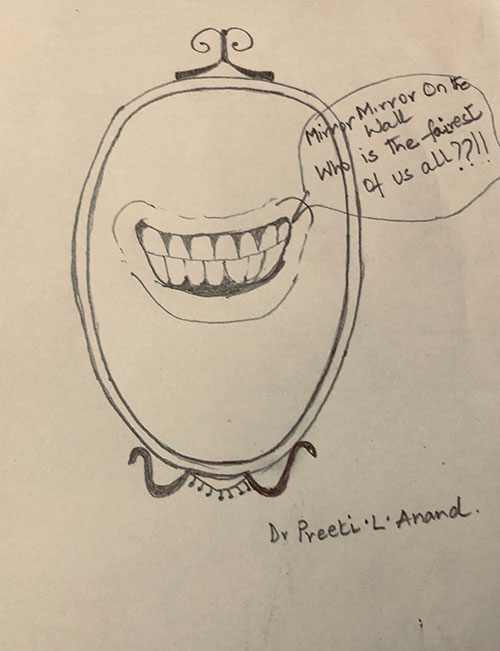How white is white?
This is a common question posed by many patients to the dentist– What do I do to make my teeth whiter?
There is a wide variation in the color of natural teeth, from milky white as seen in children to light yellow to greyish white in adults. Discoloration of teeth may be superficial/extrinsic, or they may be within the structure of teeth or Intrinsic stains. In general, extrinsic stains are far easier to remove than Intrinsic stains.

What influences the color of teeth?
- Age: As we grow older, the outer layer of teeth called enamel becomes thinner, and a more yellowish inner tissue called dentin shows through.
- Food: Consumption of too much tea or coffee can stain teeth. Excessive consumption of citrus foods, blueberries, carbonated drinks- sodas, and coloring agents in foods like turmeric can also discolor teeth.
- Tobacco products: Smoking, betel nut/ supari chewing – tobacco and betel nut products leave behind tough stains on the surface of teeth, resulting in an unsightly brown color.
- Mouth washes: Excessive use of chlorhexidine-based or Cetylpyridinium chloride–based mouthwashes can cause discoloration of teeth.
- Fluoride: Excessive fluoride levels in drinking water, especially during childhood, can lead to chalky, pitted and rough-surfaced teeth that pick up stains easily.
- Medications: Drugs such as tetracycline when taken by pregnant women or in early childhood can result in stains in developing teeth. Liquid iron supplements can cause black stains on teeth.
- Trauma: This is a common cause of tooth discoloration, especially in front teeth. The change in color is not immediate; rather a slow process as the leached-out blood in the tooth changes in color.
- Poor oral hygiene: This is one of the most important and leading causes of tooth discoloration. Plaque, a smelly biofilm, is basically a colony of bacteria, resulting in teeth having a yellowish appearance. Several microbes also produce coloured byproducts, which can stain teeth.
- Dental caries: Tooth decay results in teeth turning brown to black. Similarly, old silver-based fillings can also leave behind black stains on restored teeth.
What are the options available to remove tooth stains?

- Professional dental cleaning – scaling/oral prophylaxis– This goes a long way in removing superficial teeth stains. This is a simple, pain-free procedure, which can be performed in a short dental visit. This is usually recommended once in 6 months/1 year, depending upon the rate of buildup of stains and tartar.
- Porcelain laminate/veneers: Teeth damaged by excessive fluoride may be rectified by using dental laminates or veneers. These treatments are conservative, involve removing small thickness and replacing with porcelain laminae.
- Crowns/dental caps: Decayed teeth, especially molars, will require more extensive treatment. The teeth are reduced to a smaller size and covered by a cap. This restores the teeth to their original shade, shape, as well as size.
- Professional bleaching: Bleaching or tooth whitening is a procedure done to whiten teeth. This involves placing a bleaching gel on the surfaces of teeth and allowing it to cure. This may require multiple sittings depending upon the original tooth color.
- Over-the-counter products: There are various whitening toothpaste and gels available in the market. The results may vary, and these are less effective on stains that are impregnated into the structure of teeth.
To sum up, there are various causes of stained/ discolored dentition. Identifying the exact cause goes a long way in making a tailor-made treatment plan for the individual patient.

Dr. Preethi L. Anand
Senior Dental Surgeon and Implantologist
Kauvery Hospital, Chennai

